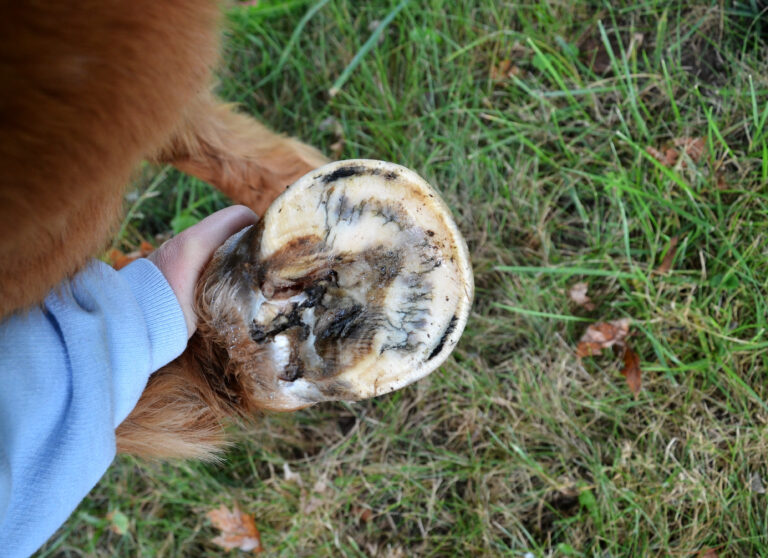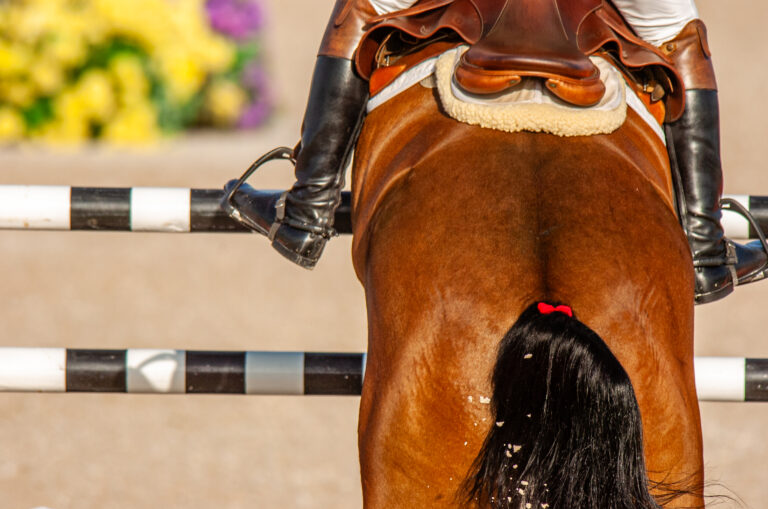Reprinted from the June 2007 issue of Practical Horseman magazine. Purchase a copy of this book HERE.
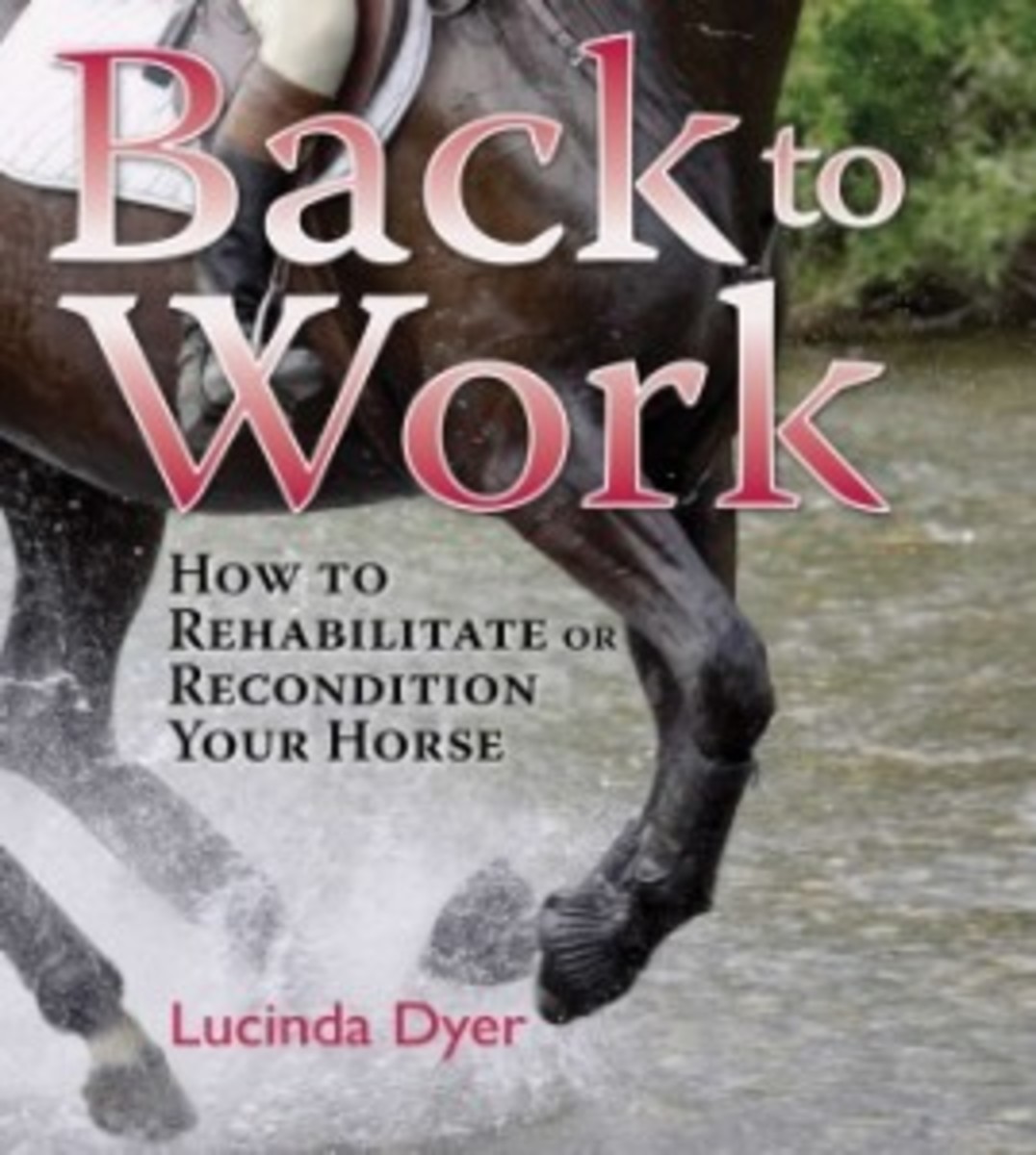
After a diagnosis has been given or a surgery performed, horse owners with ?limited experience rehabilitating their equine partners are faced with a tidal wave of questions and challenges: “I can’t get to the barn every day?who’ll wrap my horse’s legs or administer his meds?”; “What if my horse goes ballistic confined to a stall?”; “Should I change my horse’s feed?”; “To my horse, ?hand-walking’ means ?airs above the ground’?how can I safely walk him while he’s on stall rest?”
While the best source of advice is ?always your veterinarian, the experience of other riders who may have survived a similar experience (and lived to tell about it!) is invaluable.
Stall Rest
Bedding
“A horse needs to be properly cushioned and bedded so he can rest,” says KESMARC’s (Kentucky Equine Sports Medicine and Rehabilitation Center) Kirsten Johnson. “If he doesn’t have enough bedding, he’ll fight to keep himself comfortable. It’s essential to have a deeply bedded stall, even if you have stall mats. Do not skimp?use at least 10 to 12 inches of bedding.
“We think the best bedding?and the healthiest because it produces minimal dust and allergens?is cardboard. We use bedding from Hunt Club. Straw, because of mold, mildew and allergens and its overall negative effects on a horse’s airway, is the single worst choice for long-term bedding.
“The stall should be cleaned out thoroughly at least once a day and picked out regularly throughout the day. Horses sleep longer, more often, and sounder on a clean bed. And rest is essential to any recovery.”
Diet
“Horses that are confined to stalls or small paddocks during their rehabilitation,” says Kirsten, “need diets that ?provide less energy but not less nutrition?a feed that is fiber-rich and low
in carbohydrates.
“My first choice would be a good high-fat/low-carb extruded feed. If you don’t have access to extruded feeds, you can use a senior feed. ?Gradually ?introduce the new feed over a period of seven to 10 days. You can continue to top-dress with your horse’s regular supplements.
“Never simply cut back on the quantity you’re feeding your horse. He will feel deprived and unhappy and keeping your horse emotionally healthy is an ?important part of a successful rehabilitation program.
“If you are unable to hand-graze, it’s important that your horse still get a daily supply of fresh grass. All you need is a weed whacker, a rake, and a clean muck bucket.”
Limited Turnout
Most riders will tell you that the most difficult part of any rehabilitation program?for both human and equine?is the weeks or months their horse was confined to a stall. But with a little ?imagination and some heavy lifting, you can?with your vet’s approval?create a moveable and size-?restricted turnout that will allow your horse to graze near his buddies without jeopardizing his recovery.
Size-Restricted and Moveable Containment
Dealing with a fit, stall-bound Training Level event horse is not for the faint of heart, discovered Diane Francisco of Monroe, North Carolina, when Stryder, her 10-year-old Thoroughbred/?Appaloosa cross, was recovering from a torn check ligament.
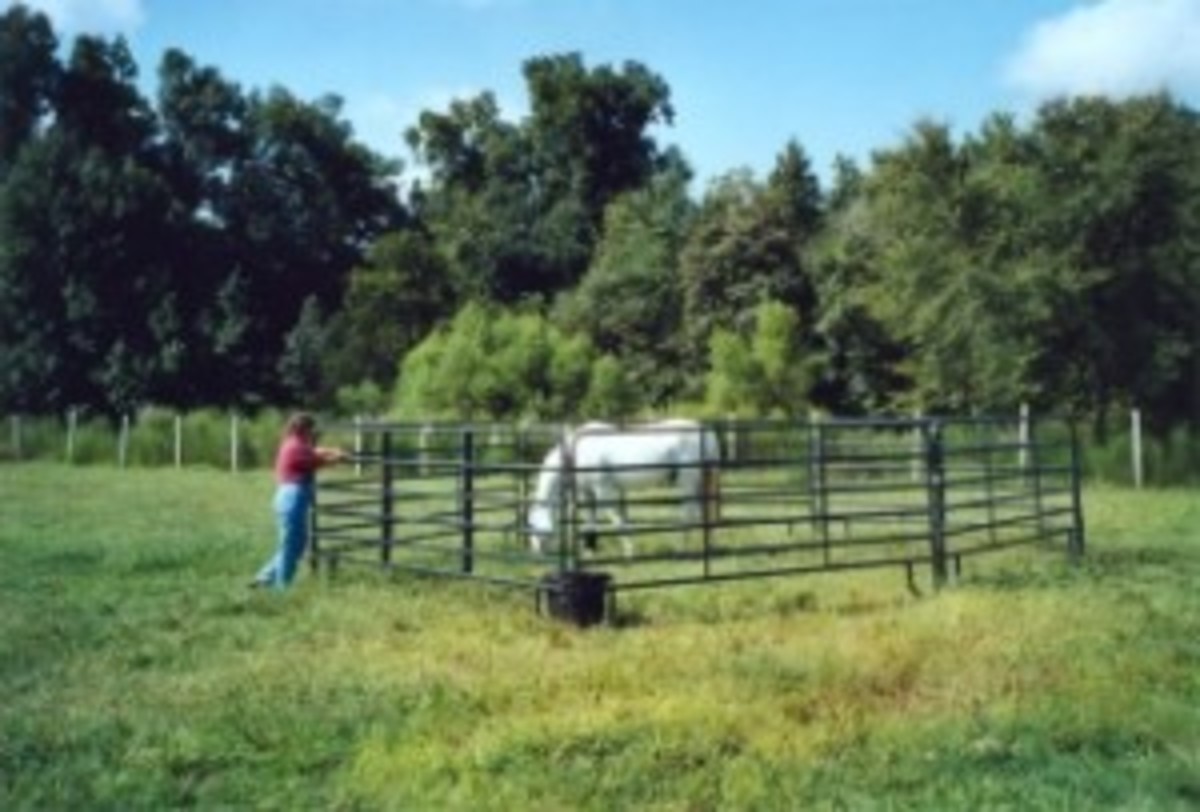
“He bolted, kicked, and dragged me?and once, my husband?whenever we took him out of his stall,” remembers Diane. “Trying to hand-walk Stryder was a disaster.” To save “a little of our sanity and prevent more injury to all of us,” Diane devised a system that allowed Stryder be out of his stall in a safe, grass-filled environment.
In one of their paddocks, Diane set up round pen panels and sectioned off a 20-foot area where Stryder could graze in semi-freedom. She made certain the footing was good and hole-free, and ?addi?tional panels were set up next to Stryder so that Rusty, his “pony pal,” could graze near him. The panels were moved each day so that Stryder would always have a fresh supply of grass. ?Diane began with 30 minutes of turnout for Stryder and worked up to five hours a day over the next two weeks.
When Stryder was finally cleared by the vet for turnout with the rest of Diane’s horses in her 35-acre pasture, she once again put the panels into service. “We hoped it would desensitize Stryder to being in a large area again so he wouldn’t go crazy and run forever once we let him loose.” She began by partitioning off a 30-foot corner of the pasture and then gradually added additional panels making the area larger and larger. “By the time we had used all the available panels, Stryder was in an area approximately 60 feet wide. One day I just left a panel open. Stryder casually grazed his way out of the pen and joined his buddies.
“Using the fence panels was probably the best idea we had throughout Stryder’s rehab. Since Stryder was so fit and used to a more hectic schedule, combating boredom was a major part of his care, and being able to graze kept him reasonably calm and occupied while giving him some time out of his stall. Everyone was happy and safe.”
Hand-Walking
Hand-walking is a crucial part of your horse’s rehabilitation program, but it can also be one of the most hazardous to your horse’s recovery and your own well-being. If you have even the smallest doubt about your horse behaving himself, do not take any chances. Know your level of handling skills and be honest about your limitations.
Discuss with your vet the possible short-term use of sedatives, such as acepromazine, if you feel your horse is in any danger of hurting himself?or you?while ?being hand-walked. Ask your trainer or another qualified horse person to give you a hand-walking lesson.
At KESMARC, the staff regularly handles young race-fit Thoroughbreds worth millions of dollars. “Being able to safely lead horses in our care is a top priority,” says Kirsten Johnson.
“A horse that gets away from his handler not only can injure himself, but puts the people around him at risk of injury.”
When hand-walking, Kirsten recommends the following:
- Until you are absolutely confident in your ability to safely hand-walk your horse, make certain a friend or fellow boarder is nearby and confine your walking to enclosed areas such as a fenced outdoor arena or ?indoor arena.
- Do not attempt to control your horse by hanging on to him. If you get into a tug-of-war, he’ll win.
- When your horse begins to get revved up or you feel you’re losing control, move immediately to an ?enclosed area.
- If you need more control over your horse, use a correctly applied chain over your horse’s nose or a lip chain with a stopper. If your horse is not ?accustomed to a chain, you must ask your trainer or vet for guidance before using it. “We always introduce horses to nose or lip chains in their stalls,” says Kirsten. “Make it a slow process with petting and rewards. The goal is to acclimate, not terrorize your horse. Only when he respects and ?understands the purpose of a chain should you lead him outside his stall wearing it. You can wrap the lead chain in Vetrap? to cut down on any scrapes or cuts on his nose or gums should he act up. As a health precaution, never share ?Vetrapped’ chains between horses. Never put a chain under a horse’s chin. It’s the quickest way to flip a horse over backward.”
Get Help! It Can Take a Village to Hand-Walk a Horse
When Tiny, Teri Bernstein’s 14-year-old Quarter Horse gelding, arrived home after a grueling eight days in ?intensive care after colic surgery, Teri knew she would need help with the weeks of hand-walking that were ahead.
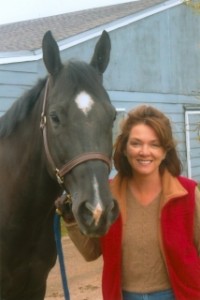
A wife and mother of small children, Teri lived 28 miles and a 45-minute drive from her barn in Golden, Colorado. “I couldn’t physically be there to hand-walk Tiny three times a day as prescribed by his vet without camping out and forgoing all of my other responsibilities.”
Asking for help did not come easily to Teri. “I like to control my own life and those closest to me?my children, friends, and animals. I call it ?quality control.'” But with Tiny’s recovery on the line, Teri knew she had to reach out to her fellow boarders for assistance. On the large white board at the barn’s entrance, Teri tacked up a plea for help with Tiny. She explained that she needed volunteer hand-walkers and let people know that they could help as little or as much as they wanted.
She put together a plastic three-ring binder that contained calendars and a notepad, attached a pen with a long ribbon, and tied it all to a halter hook outside Tiny’s stall. “I asked volunteers to sign up next to a calendar date, either a.m., noon, or p.m. They were asked to let me know on the notepad how long Tiny was walked and anything else I might need to know.”
A group soon known as “Tiny’s Aunties” began to fill up the gelding’s rehab calendar. “I was very fortunate that not only was there a group of young show riders at my barn but a huge group of ?mature’ women who came and went at all hours. While there were several wonderful junior riders who signed up, it was largely the older women in the barn that stepped up?much to Tiny’s delight, as he seemed to find comfort in their quiet natures and their mothering of him.”
Tiny’s favorite “Auntie” was a woman in her sixties named Sam, who not only walked him, but massaged him and did a series of exercises to help break down the scar tissue caused by a hock injury Tiny received while he was in intensive care. “To this day, Sam and Tiny have a special bond. Tiny hears her voice and comes right over. Without her I would not have been able to get it all done.
“We’ve always tried to help each other out at our barn, but this was the first time we had to deal with a major long-term medical issue. I learned to reach out?I now have a motto, ?All they can say is no’?and I learned that it’s okay to give the reins over to others, even if they don’t do it my way. People have good hearts and they want to be needed. All you have to do is ask.”
“Tiny has since retired and found a second career with his new owner, a psychologist, helping her patients overcome road blocks in their recovery. He lives in the Rocky Mountains with a beautiful pasture and a lovely barn, and he goes on trail rides and is truly loved!”
Teri’s Tips
- Meet personally with those who want to help and show them exactly what needs to be done and, if you’re using a calendar or journal, how to log in walking times and progress updates.
- Have a backup “go-to” person. Janet, our barn manager, was always there if anyone had questions or if something didn’t seem right with Tiny. I trusted her judgment without hesitation.
- Check in with your horse’s “Aunties” every week. Let them know how much you and your horse appreciate their help and ask for their input on how your horse is doing.
Adventures in Hand-Walking
While hand-walking is often described as week after week of sheer boredom, it can be a time?with some imagination and a cooperative horse?for remedial lessons in ground manners, an introduction to a particular training methodology?such as clicker training?or an initiation to foreign environments.
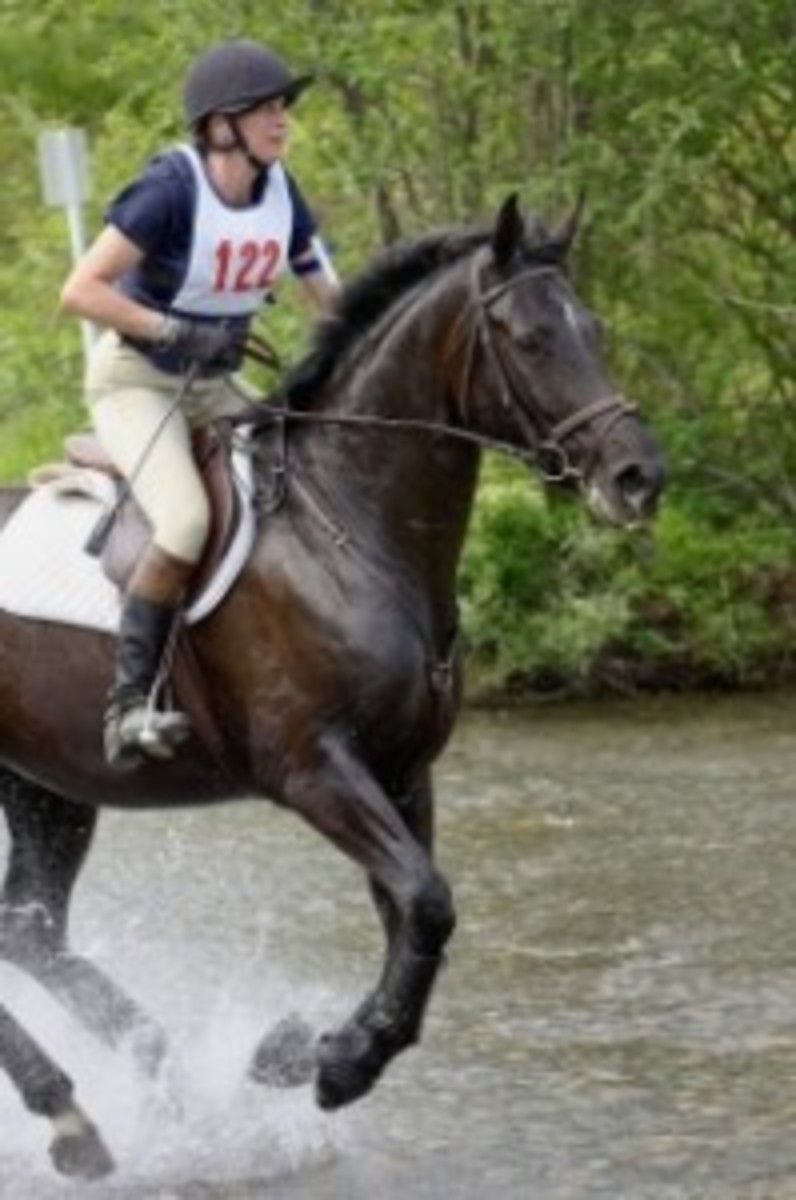
When Anna Schierioth got the go-ahead to start 30 days of hand-walking with Godiva, a two-and-a-half-year-old homebred Thoroughbred/Hanoverian coming back from colic surgery, she decided to put the weeks to good use. “Godiva was bred to be an event horse, and I thought an early introduction to the potential terrors of the outside world might really pay off when it came time for her to tackle a cross-country course.”
A hardy New Englander, Anna was undeterred by November temperatures that ranged from the high twenties to the low thirties and set about showing Godiva the wonders of rural Fitzwilliam, New Hampshire.
For safety, Anna gave Godiva a dose of acepromazine prior to each walk?”It may not have helped, but a little ?fairy dust’ made me feel safer”?and also walked the mare with a chain over her nose. Her goal: walks that were interesting but not over-stimulating for a young horse.
At first, remembers Anna, “She’d shy at anything. As you can imagine, we raised more than a few eyebrows in the neighborhood.”
But it wasn’t long before Godiva settled in and Anna expanded their walks to include the local fire ?department’s training station. She and ?Godiva would explore its ladder ?tower, dirt parking lot, pond, out?buildings, and trailers before heading down a small trail to an abandoned summer camp complete with rusting camper. One Sunday, they even took in the “very spooky” sights at
a nearby lumberyard that was closed for the day.
At four, Godiva completed her first Beginner Novice horse trial and is now competing at Training Level. And did Godiva’s hand-walking outings pay off? “Absolutely,” says Anna, “Her first time going cross-country, she didn’t even look at all the new things?she just jumped them!”
Reprinted from the June 2007 issue of Practical Horseman magazine. Purchase a copy of this book HERE.






